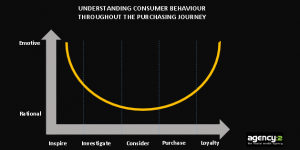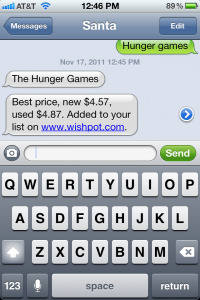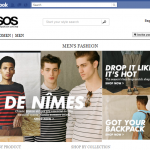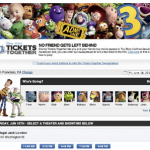Making social ad performance and social marketing impactful by understanding consumer behaviour
May 27, 2016
Making social ad performance and social marketing impactful by understanding consumer behaviour
Smartphones are walking billboards
We all know how quickly and comprehensively social media has changed the marketing landscape; traditional marketing is no longer the bread and butter of any given strategy. There are endless ways to reach new customers, with so many new tools presenting fresh challenges to understanding consumer behaviour.
In order to effectively influence consumers,
Content must:
- hit the right buttons emotionally
- be effective at promoting conversions
- encourage engagement
- be delivered at the right time
Customers must:
- Trust the brand
- Feel connected to the brand and their messaging
- Be compelled to join the community
- Feel socially connected
How do we effectively reach customers when they are being bombarded with information every minute of every day?
1) IDENTIFY WHERE THEY ARE WITHIN THE PURCHASING CYCLE
- Within the purchasing process, there are many stages where different decisions will be made. In order to fully understand consumer decision making, we feel it is essential to know where a consumer is within the buying cycle. Once this is identified, the content channels and the creative can be targeted to reach these various stages.
- As can be seen here, in order to push forward purchasing intent, the emotional brain must be stimulated both at the beginning of the buying cycle as well as at the end, once a purchase has been made. The rationale behind this is to funnel the purchase through the competitive noise, by inspiring brand affinity and purchasing desire. The rational brain comes much more into play once a consumer is already on their purchasing journey.
2) IDENTIFY THE LEVEL OF BRAND AFFINITY
This will run along a gradient, from new customer to loyal or repeat customer. It is necessary to figure out where a consumer stands with respect to their ‘feelings’ about a brand.
3) IDENTIFY THE MOTIVATION BEHIND THE PURCHASE
- The complexity of the product cannot be forgotten, as this will feature in research around competitiveness and appealing to a consumer’s emotional side.
- For example, let’s look at a parent purchasing a cot mattress vs. a toy storage box. In the first instance, brand trust is a huge component whereas in the latter example, the product benefits and specification will be much more relevant.
- In both examples, trust and product benefit both feature but in differing proportions based on purchasing intent.
Understanding the above consumer behaviours will help shape your social media strategy and drive purchasing through increased engagement and clever influencing of behaviour personalisation. In turn, brand advocacy will be increased without much effort!
A Social Ad Technology Case Study – Top Toy Shop Retailer
April 19, 2016
View the video below to see how our social ad technology achieved £10 Revenue on every £1 spent on Facebook Advertising, through the following advanced targeting:
- Reached a larger, more active audience
- Included advanced audience interests
- Utilised trending content
- Implemented demographic social data into the campaign
If you’d like to speak to one of our social media specialists today, why not get in touch on 0203 567 1380.
Social for selling
February 6, 2015
A new report by Shareaholic this week highlighted the following: Social media has become the number one driver of ALL website referral traffic. In 2014, the figures rose from 22.71% to 31.24%, a massive increase over this time period.
This is a significant opportunity to consider; although this growth may not be sustainable, it is definitely something for businesses to focus their marketing campaigns on now.
Which channel is the biggest referrer? Unsurprisingly, Facebook is still tops by a wide margin (24.63% in December 2014 vs. next best channel Pinterest at 5.06%). Despite the challenges of decreasing reach resulting in increasing media spend and younger audiences leaving etc., Facebook remains the channel of choice to get the word out about your business. Not to mention, social media traffic referrals grew by 59.58% in this same time period.
What does this mean for marketers? If social media is now the number one referral method where both good and bad feedback can go viral, your business needs to ensure the following is in order:
• Customer satisfaction – expectations of service are high and fans are now posting their grievances on social media pages. If your business is not able to deal with criticism and complaints effectively, it will ultimately affect your sales negatively.
• Moderation – social media trolls are active and can be vicious. Moderation is key towards managing press and ensuring negativity is dealt with appropriately.
• Quick response times – customers are online 24 hours a day. If they can’t reach you immediately, they will move on quickly to the next best seller.
• Community growth – engagement is key towards building your brand, and will contribute to healthy sales. An engaged community will lead to strong brand awareness, driving clicks to your website.
A focused social media strategy will ensure your website will be seen, ultimately leading to increased sales and return on investment
Cookie Best Practice
April 20, 2012
From 26 May 2012 websites operated in the EU will be required to inform their users that they are being tracked with cookies, and to ask users for their consent. There’s much that brands can do to support site architecture changes by reviewing how they relate to their B2B and B2C customers in two areas:
1. Transparency
Businesses using cookies must be completely transparent in how they collect, store and use data.
Make sure your privacy policy is up to date and that you’ve provided information on how to reject or delete cookies. By making it clear you’re using them, what they are being used for and how users can control them, you’ll educate people about how they are essential for personalisation.
2. Responsibility
Data must be used responsibly. There has been very little misuse of cookies by B2C and B2B companies and this must continue.
Businesses must be aware of all cookies utilised within their website – the legislation includes both your own cookies as well as cookies set by a third party. So remember, you are responsible for all cookies on the site and ensuring they comply with the legislation.
Ultimately, when used responsibly and effectively, cookies are an invaluable way of enhancing the user experience and customer satisfaction, as well as providing marketers with a vital tool to improve conversion rates. Transparent and responsible use of such data will safeguard these benefits for both parties.
Siri, Santa and Wishpot
November 25, 2011
The launch of the new iPhone 4S showcased a new feature that has had everybody talking: Siri. The voice-recognition tool has proved a revelation since the release of Apple’s latest mobile, allowing you to use your voice to send messages, update your Twitter feed, schedule meetings, place phone calls and more.
Now Wishpot, the social shopping service that lets users build online wish lists, are taking advantage of the technology to do something festive. So, with Christmas fast approaching, there is now one more thing you can use Siri for: adding items to a Christmas wish list and getting a text response.
With many people currently making their Christmas lists it’s the ideal time to launch the app – and it couldn’t be easier to use:
How it works:
It really is simple: if you are a member of Wishpot you tell Siri the product you want (you can also read aloud barcode UPC and ISPN numbers). Siri’s technology then sends it to Wishpot, which automatically sends you a message telling you the lowest price for the item – and also notifies you when the price drops.
With brands like Amazon and Starbucks rolling out tools and apps to help boost sales during Christmas, Wishpot’s use of Siri demonstrates the brand’s innovation and is a great way to keep track of everything you want to buy. Particularly today – it is, after all, Black Friday.
Top 5 Tips for Social Commerce
April 20, 2011
Will Facebook commerce be the game changer in 2011? There’s a real feeling among a lot of people in the industry that social commerce is the second online commerce revolution. Many brands have already started to utilize Facebook as an e-commerce platform and it will become increasingly important for businesses to use Facebook to deliver a truly social shopping experience.
Here are five tips to make the most from Facebook Commerce:
1. Make the User Journey as Easy as Possible
Given that Facebook commerce is still in relative infancy, businesses need to clearly demonstrate that buying from Facebook stores is easy and beneficial.
For Facebook commerce to maximize its potential Facebook needs to mirror traditional e-commerce in terms of proving its usability, customer service, security and privacy – as well as its ability to generate revenue. Businesses also need to clearly demonstrate the unique value proposition of a Facebook store compared to a brand’s website by providing instant rewards and unique personalized relationships as well as providing a clear call to action.
Greater transparency in terms of user experience, along with improvements and innovations which will simplify the process such as accepting Facebook Credits – Facebook’s own currency – for payment, can also only help to make the Facebook commerce proposition even more popular.
It shouldn’t be difficult to get Facebook users on board: the ability to have a complete brand experience – from engagement and product browsing right through to checkout – without having to navigate anywhere else is an extremely appealing one.
2. Remember it’s SOCIAL Commerce
For Facebook Commerce to be successful brands need to remember that this is social media. That means the Facebook Store shouldn’t simply be a bolt on to your Facebook Page, it should be a fully integrated part of the user’s social experience.
It might sound strange to not only talk about selling when it comes to social commerce but the idea is to use e-commerce to enhance the social aspects of your Facebook presence. There must be a smooth transition between engagement on the Wall and the user making a purchase – everything must connect. Brands must foster meaningful and personalized engagement with their fans before they focus on selling them anything.
The point is that you need to remain genuinely social by giving consumers the ability to engage in conversations about the brand and product with you and their peers. Your Facebook Page has to be your shop window, your customer service center and your store.
3. Monitor to Personalise
One of the great benefits of Facebook commerce is the opportunity to understand what your customers buy and what they want and use this to provide a personalized user experience.
Facebook has developed a range of tools that allows brands to gain further insights about their customers. Facebook Insights allow you to track the performance of your e-commerce platform – this includes metrics for specific features such as ‘Likes’ and shares as well as demographic information and user behavior. This information can then be used to understand what messages, deals and rewards will be most effective in gaining customers and maximizing sales.
This ability to understand your audience and tailor how and when you communicate with them is what makes social e-commerce such a compelling solution for brands.
4. Provide Exclusive Content
If customers are unsure whether to purchase through Facebook then one way to encourage them to engage and buy is to use social commerce to offer your customers a unique buying experience.
Be innovative. Make your brand stand out. Facebook provides all the tools you need to create a personalized relationship with customers and make them feel unique by offering exclusive Facebook deals and offers.
There are many examples of brands providing a special value proposition such as products ‘only available on Facebook’, one-time-only availability and offers limited to Fans of the Page to make products compelling. You can also reward loyalty by providing incentives for customers buying through Facebook.
Other innovative features have seen brands create Pop-Up Shops and integrate a wish-list into their Facebook store. You can also use ‘fan-gating’ so that content becomes exclusively available only to Fans of your brand or who ‘Like’ your posts.
5. More than the Facebook store
We’ve talked here about Facebook commerce as the Facebook store. However, you can also take Facebook to your e-commerce site by using the Facebook Open Graph Protocol and social plugins. These tools integrate Facebook into a business’ website enabling them to use Facebook member data to display information, goods and services tailored specifically to that user’s interests.
For users this means a personalized web experience based on their tastes, interests and relationships. For brands, by implementing a few lines of code, it means they can provide highly customized engagement experiences for their consumers. For example, retailers can utilize Facebook member data in their e-commerce sites to recommend certain products and allow people to easily share things they like.
Some of the biggest brands in the world such as Amazon, Levis and Trip Advisor have done this very successfully – integrating with Facebook to offer instant personalization and allowing people to share what they like with their friends on Facebook.
The Future for Social Commerce
Why is Facebook Commerce such an enticing prospect for marketers and businesses? Well, it offers a unique amalgamation of sales and marketing, where you can seamlessly turn a Fan into a customer. It also makes complete sense – it allows you to take your company to where your customers are. With 600 million users that place is Facebook.
This post was first published on Social Media Week.
Social ecommerce: how social media is transforming ecommerce
March 28, 2011
Social ecommerce is a term you will be hearing a lot. It is at the forefront of marketers’ discussions and looks set to redefine ecommerce. In August 2010 Mark Zuckerberg stated that “If I had to guess, social commerce is the next area to blow up”. Since then social ecommerce (or Facebook commerce or F-commerce, if you prefer) has moved on apace. You can now rent films, book plane tickets, make donations to charities purchase clothes and even buy Tomato Sauce – all through branded Facebook Store tabs.
The rise of Facebook ecommerce has transformed Facebook Pages, allowing brands to not only engage with fans but also sell to them. Businesses are starting to realise the value of using Facebook not just to engage but to translate the conversations they are having with fans on Facebook into conversions.
Facebook now provides a tangible difference to a business’ bottom line. This is obviously a very enticing opportunity for marketers. There are more than 30 million people on Facebook in the UK alone (out of a global potential of 600 million). Social ecommerce means that brands can provide a one-stop-shop where consumers can get everything they need without ever leaving Facebook. This is a huge opportunity to convert Fans into customers.
However, how do you leverage your Facebook store to maximise profits and brand engagement?
- Holistic social ecommerce solution
Brands need to understand that social media is about trust and relevance. There are a number of key elements that must feature in any social media community – and your social ecommerce programme must utilise these. This includes ease of use, brand trust and personalised offers, coupled with high levels of customer support and advice. Creating such a holistic solution ensures your social ecommerce activity fits seamlessly into your social media offering.
Retailers must focus on keeping brand advocate experiences social and engaging – adding value to your customers’ brand experience at every stage of the buying process – instead of solely focusing on sales. It is through providing this complete brand experience that you will maximise sales.
- Social ecommerce and sharing
Social media has reinvigorated word of mouth marketing – and likewise social ecommerce encourages a personalised shopping experience, based on sharing and the trusted opinions of peers.
The very nature of social media means that brands are dealing with consumers to whom discussing and sharing things with their friends is second nature. Brands must therefore use Facebook share, ‘Like’ and review APIs to maximise the visibility of their brand, their products and their Facebook store tab.
Brands need to provide shareable, relevant content. Get this right and you have an audience who are willing to recommend you to their peer group. Facebook store apps make this easy – they include many social features which means shoppers can easily share products they Like with their Facebook friends as well. This produces a social domino effect, with your brand featured on more and more users’ news feeds – and it will optimise your online visibility and sales.
- Facebook ‘Like’ to Facebook ‘Buy’
For marketers and brands alike social ecommerce offers so many possibilities because it provides a concrete link between ‘Likes’ and a business’ bottom line.
Facebook has developed a range of tools that allows brands to track this. Facebook Insights allows you to track the performance of your e-commerce platform – this includes metrics for specific features such as ‘Likes’ and shares as well as demographic information and user behaviour. The information can then be used to understand what messages, deals and rewards will be most effective in gaining customers and maximising sales.
This ability to understand your audience and tailor how and when you communicate with them is what makes social ecommerce such a compelling solution for brands.
The future for social commerce
Facebook’s ecommerce solution has created a huge potential marketplace – and explains why it such a hot topic. However, it is also here to stay. Facebook audiences are receptive to brand messages, willing to share information and buy products from brands. A Facebook ecommerce tab is a cost effective, tangible and unique way for brands to provide a complete user experience in a social space.
It’s crucial for brands to understand exactly how they can convert ‘Likes’ into buys and, most importantly, how they can make their ecommerce platform a fully integrated part of their wider social media strategy. It is only through this process that brands will not only maximise sales but also encourage brand loyalty.







